The search and AI ecosystem is full of promise, options, and new ways for literally every type of marketer to evolve and grow.
Yes, there is lots of complexity, but there is also commonality: the need for marketers to focus on topical approaches to content creation, build their brand authority for AI citations, and become more predictive in their approach to how consumers interact online.
The introduction of Google AI Overviews and new AI-first platforms like Perplexity AI are making how consumers find answers to their needs a lot more complex.
The advancement of LLMs such as Claude and Google Gemini are also revolutionizing content outputs in visual and video formats. Just recently, Bing introduced GSE and OpenAI SearchGPT.
One thing they all have in common is that they are all fighting for the best authoritative sources for information and citations.
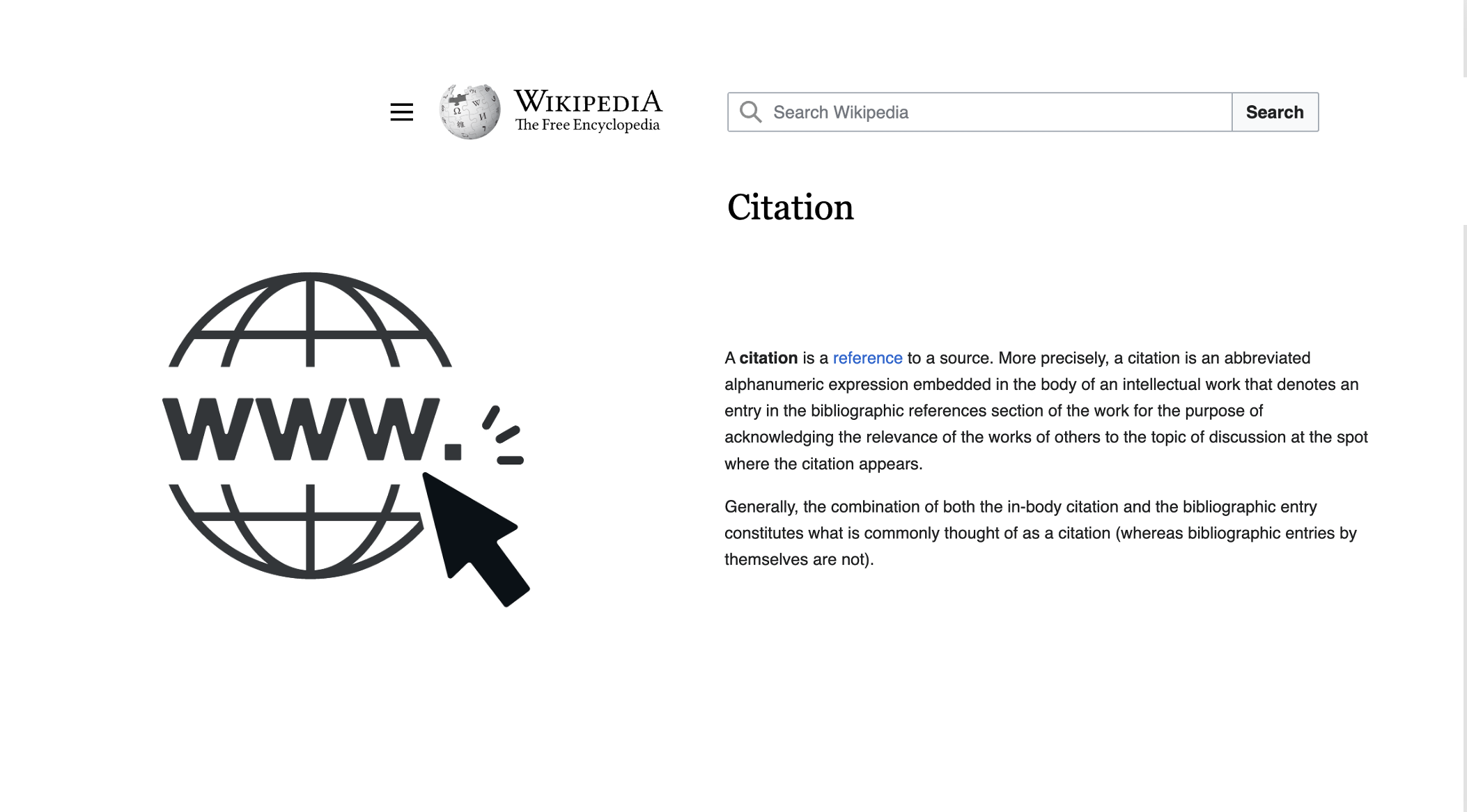 Screenshot from author, July 2024
Screenshot from author, July 2024Today, I will mainly use Google AI Overviews in Search as an example, as they currently offer the most rich insights and best practices that are applicable to future and upcoming engines.
AI And Search Citations, Authority, And Your Brand
Being the cited source is quickly becoming the new form of ranking.
As AI looks to cite trustworthy and relevant content, brands need to be the source. While every engine has a different approach, the reality is that success relies on sources and quality.
They look to answer questions in many ways, and citations are common across the board. They look at authoritative sources to see whether that source answers that question, and then they seem to know whether it’s quotable.
- Google wants quotable content that is above the fold, not buried. It also likes the question to be directly answered.
- Perplexity, which has steadily increased traffic referrals (31% in June), focuses on academic and research citations but has had issues with attribution and sources.
- Bing GSE is engineering its search results to satisfy users in a way that encourages discovery on the websites that originate the content.
- ChatGPT/search does not need direct answers; it will digest them and express them in its own language. At first glance, it mainly cites and links to sources developed with input from major publishers like the Atlantic and NewsCorp.
So, as marketers, it is the simplest way to start focusing on the commonality and best practices that prepare you for what is ahead. Then, you can pivot and adapt as we learn more about how citations are shown and treated as each AI engine evolves.
For example, Google AI Overviews is beginning to cite more authoritative review publications to help users shop. The removal of user-generated content (UGC) and reviews from Reddit and Quora dropped to near zero in AI Overviews.
- Reddit citations: 85.71% decrease.
- Quora citations: 99.69% decrease.
User-generated reviews may not be designed for a broader audience and lack the objectivity that a publication would. BrightEdge Generative Parser™ has recently found:
- 49% increase in presence from PC Mag.
- 39% in Forbes increase in presence from Forbes.
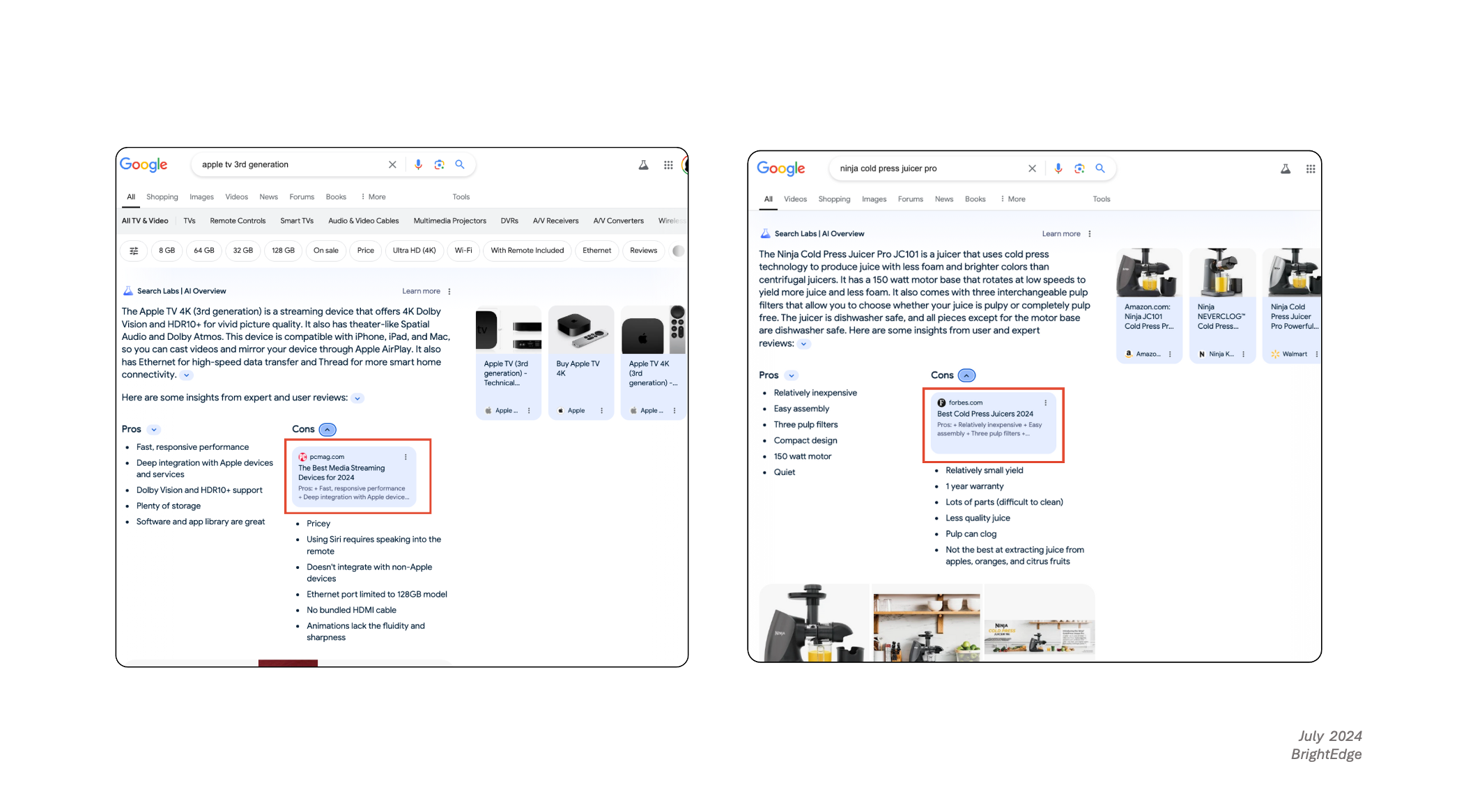 Screenshot from BrightEdge, July 2024
Screenshot from BrightEdge, July 2024Sites like Forbes are becoming key players in AI overviews. As well as thought leadership and instructive information, their comparative product reviews define where a product shines and where it falls short against competitors.
Here are three things that marketers can master now to stay ahead in AI and search.
1. Ensure AI Engines Find You: Become The Cited Source
Start by identifying core – and broader, see later in the article – topics relevant to your audience and aligning with your business objectives. These topics should serve as the foundation for a thematic content strategy.
Schema+: Diversify And Mark-Up Your Content As Much As Possible
The importance of diverse content formats cannot be overstated. To adapt to answer engine models, content must be comprehensive and encompass multiple modalities, including text, video, infographics, and interactive elements.
This approach ensures that content caters to diverse user preferences and provides information in formats that are most accessible and engaging.
Core technical SEO approaches like Schema Markup are essential for content marketers aiming to enhance their visibility and relevance in search results, as they help search engines better understand the content.
This improves the likelihood of content being featured as a direct answer and enhances its overall discoverability.
- Provide AI engines with hints on who you are.
- Ensure your teams look at things like Schema so AI entities can see your content.
- Little formats like these can tell the AI models how to use your content.
- It ensures that you are more frequently cited as the source in topics where you already have the right to win.
Develop content clusters around these core topics, covering different aspects, subtopics, and related themes. Each piece of content within a cluster should complement and support others, creating a cohesive narrative for multiple users.
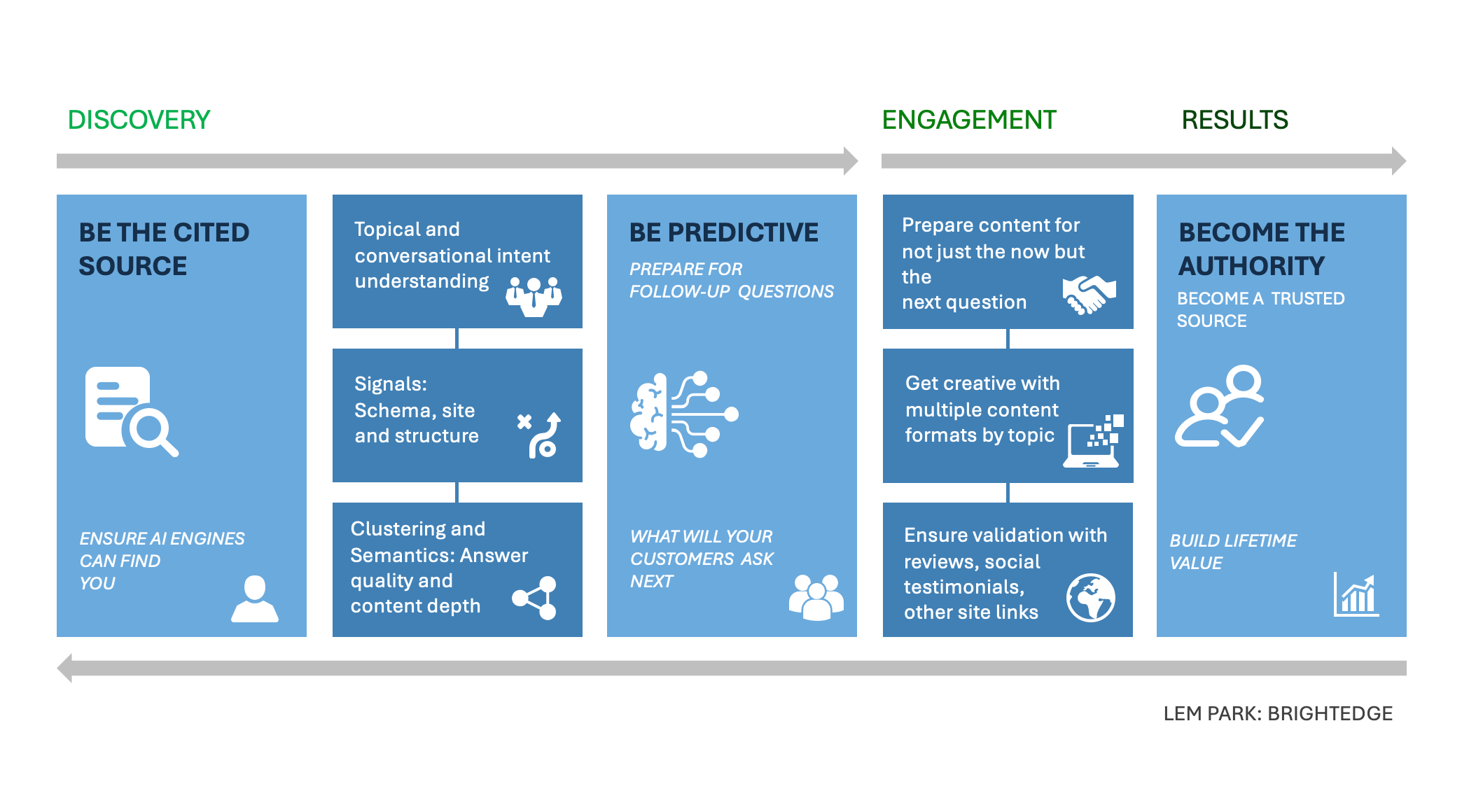 Image from BrightEdge, July 2024
Image from BrightEdge, July 20242. Anticipate Customers’ Next Questions: Focus On The Follow-Up
Build Thematic Content & Focus On Content Clustering
AI-powered search engines like AI Overviews (as explained in The Ultimate Guide to AI Overviews, free, ungated, and updated monthly by my company, BrightEdge) are redefining the criteria for visibility by prioritizing thematically connected content.
This applies even where the content doesn’t rank highly in traditional search results, making intelligent content clustering and thematic coherence essential.
Adopting a strategic approach to thematic content and content clustering means that instead of creating isolated pieces of content, you focus on developing interconnected content clusters that comprehensively explore various aspects of a topic.
- AI search aims to do more than display a list of products for the keywords.
- They want to anticipate the following questions that the demographic will likely have: how, what, where, and more.
- AI models will cite trusted sources to generate these answers before the user even thinks about asking them.
- Marketers need to create content for all these types of follow-ups in different formats.
Ensure that content within the same cluster is interlinked using relevant anchor text. This helps search engines understand the thematic relationship between different pieces of content and strengthens your website’s authority on the topic.
Understanding what triggers things in AI Overviews will become essential.
For example, in June, there was a 20% increase in “What is” queries showing an AI Overview. For brand-specific queries, there was a 20% decrease.
This could show that Google uses AI for more complex, knowledge-intensive topics while playing it safe with brand queries.
However, expect this to change monthly, as SEJ states and shares more below:
3. Prove Your Expertise: Become The Authority In Your Field Domain
Baking User and Topical Intent Into Every Piece of Content
Traditional SEO focuses on keyword rankings and visibility, but AI-driven search engines prioritize delivering precise, relevant answers based on user queries. This shift means simply ranking highly is no longer enough; you must ensure your content aligns closely with users’ needs and topics of interest.
AI-powered search engines like ChatGPT, Google’s SGE, Perplexity, and now SearchGPT are designed to comprehend the context and nuance behind a user’s query. They aim to provide direct answers and anticipate follow-up questions, creating a more dynamic and personalized search experience.
*A Note of Serving Multiple Intents*
AI-powered search results are evolving to coexist with traditional search. Google is experimenting with blending conventional and AI-enhanced search results. For example, searching for [outdoor lighting solutions].
The traditional search component assumes the user intends to purchase such products and ranks relevant ecommerce sites accordingly. This serves users who know exactly what they’re looking for and need quick access to buy options.
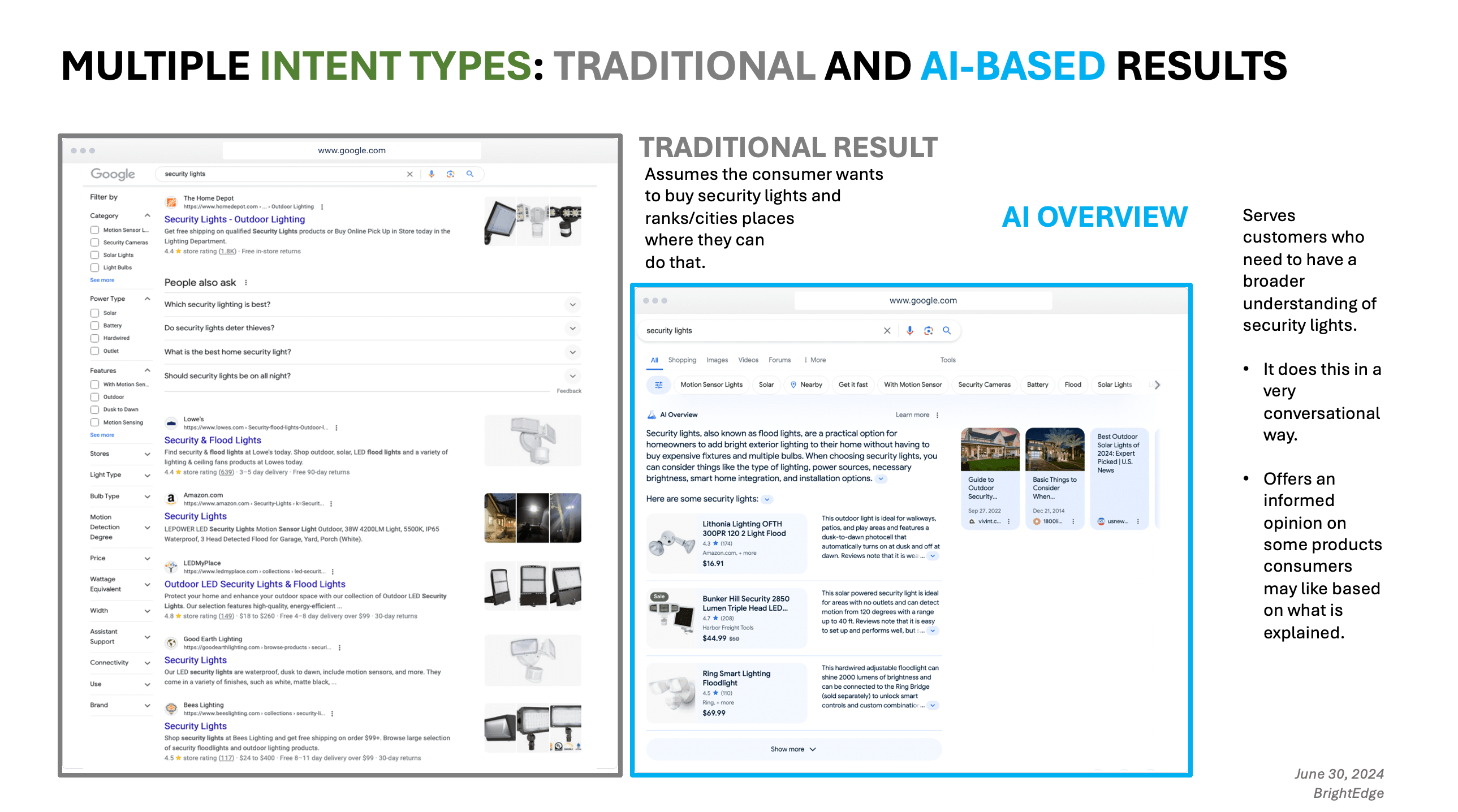 Image from BrightEdge, July 2024
Image from BrightEdge, July 2024In contrast, the AI-generated overview caters to users seeking a broader understanding of outdoor lighting. It might provide a conversational explanation covering various aspects, such as:
- Key considerations when choosing outdoor lights.
- Various types of outdoor lighting and their characteristics.
- Available power options for outdoor illumination.
- Understanding brightness levels and their significance.
- Best practices for installation and placement.
- Tips for maintaining outdoor lighting systems.
Anticipating and addressing related queries helps build the site’s credibility and improves the chances of being featured in AI-generated answers.
Since AI-first engines, LLMs, and traditional search engines are designed to recognize and prioritize unique, high-quality content over generic or duplicated material, this increases the chances that your content will surface in response to user queries.
- Prove your expertise and make it easy for AI models to trust what you say.
- AI engines need to see that your content is approved (validated) by other experts, as well as user-generated content and reviews.
- Ensure your content reaches expert influencers and connects to related sources and websites.
- Gain as much 3rd party validation that your content is trustworthy.
- Ensure your content workflows consider traditional ranking factors and AI citations, as they rely on some standard but separate signals.
Video And YouTube
We are now seeing (pros and cons) YouTube videos cited in AI Overviews in ways that benefit marketers at the top of the funnel.
If YouTube were not part of Google, it would be the sixth biggest digital platform in the USA. It commands a lot of reach!
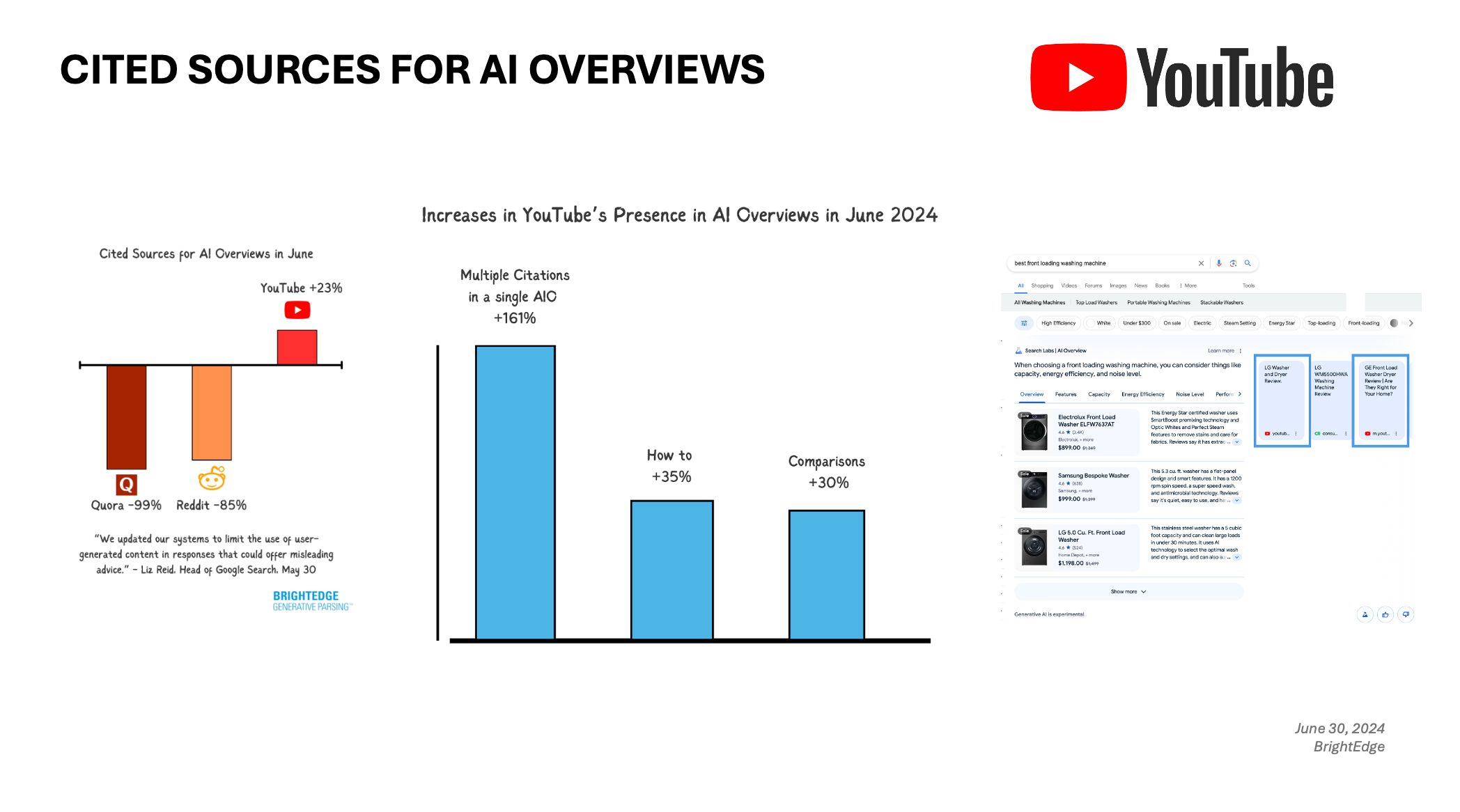 Image from BrightEdge, July 2024
Image from BrightEdge, July 2024As you can see above, this offers new advantages to marketers targeting early-stage prospects. Visual content can effectively showcase specific offerings and provide tangible reviews, potentially swaying purchasing choices such as buying a washing machine.
They are being shown to help simplify complex topics for users. For example, abstract technological concepts like “blockchain fundamentals” often become clearer through visual demonstrations, accelerating audience understanding.
Ensure that when you identify high-potential topical themes, you pair them with AI’s video citation preferences. Video is on an explosive growth trajectory, so start to build and get creative as part of your more comprehensive marketing strategy and for maximum AI Overview visibility.
This helps offer multiple reference possibilities. A single piece of video content could be cited numerous times, expanding your topical reach, which I mentioned earlier.
Key Takeaways
In an era where AI-driven search and AI-first answer engines or assistants reshape how markers operate, marketers, SEO pros, content creators, and brand marketers must adapt their strategies to optimize for AI answers and multiple types of search engines.
Below are a few end notes and outliers for your consideration also:
- The core basics of SEO and classic search still matter.
- AI Overviews are reduced in size to give more concise answers.
- AI answers more complex questions, but more common questions and queries are also answered in better-served universal or classic formats – balance will be essential.
- Monitor with cadence new engines; many are so new it will take an informed data-led opinion to form.
- Going forward, different types of consumers will use engines for various use cases, and each engine will cite some common sources and other specific ones like news academics and publishers. Let’s see how it develops; it is something I am looking into myself now.
- Always remember that everything varies depending on your vertical and type of business. Experimentation is still very heavy everywhere, including at Google!
- With new entrants emerging, the news and live experiments every day expect change.
- What happens in one month can differ from another while engines find equilibrium.
Essential best practices such as focusing on user intent, leveraging structured data markup, and embracing multimedia content aren’t going anywhere. Classic search is here to stay; many skills are transferable to AI.
The future lies in a balance of classic online marketing, adapting to AI, and uncovering new AI engines’ nuances as they grow and establish more of a foothold. It is an exciting time, and I think exercising a little patience will help us all prevail.
As for SearchGPT, I believe its evolution does not diminish SEO; on the contrary, it makes it even more critical!
For now, monitor and use time-based data as your compass, and don’t react to opinions without some substance behind them.
More resources:
Featured Image: ArmadilloPhotograp/Shutterstock
